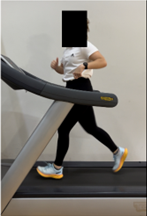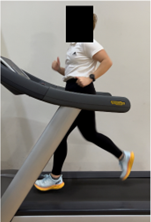Power of Running Cadence
Posted on August 1st, 2023 by Andries Lodder
Running is generally referred to a poor man sport. Additionally, it is the simplest and cheapest form of exercise. You don’t need a gym membership or a lot of training equipment, you only need some motivation/determination and your feet. This simple sport seems to be very straight forward, just run, but at some point, you struggle to improve your running pace or you get the one injury after another. There are lots of solutions but to increase your running cadence is one of them.
In the world of running the topic of cadence generally comes up during discussion, but what is cadence actually?
Cadence is the stride rate, in other words the number of steps you take per minute (SPM) while you are running. It is the most common unit and an essential factor, that are used to measure your correct running technique and form. Besides, if you don’t have a device that can measure your cadence, on your next run count the number of times your feet strike the ground in one minute. It can be a powerful tool to improve your running technique.
For starters, a stride is the distance between contact point of the one foot to the other. Stride length and cadence has a lot to do to one another, as the length will be the distance we travel with each stride. In other words, the speed of a runner will be determined by the relationship between the stride length and the cadence.
What is the use of knowing the cadence in running data?
Cadence has a direct effect on speed. Controlling the stride rate will increase the speed but only to a point that your body can handle it, and this will lead to minimal muscle fiber breakage and will reduce injuries.
The higher your cadence the quicker your stride rate the faster and the better you run with little force on the joints. If your cadence is slower/ low your strides will be bigger, and this will lead to slamming your heels into the ground and locking your knees and will have a negative impact on the running mechanics. In other words a greater force on the joints. This can not only impact your performance as a runner but also make you more susceptible/ vulnerable to injuries.


Why would adjusting my cadence reduce the risk of injuries?
Let’s say you increase your cadence 5-10%, this will lead to:
- 15-20% lower load on the knees
- 9-11% reduction on the Abductors (glutes)
- 10% less force on your ankles with 3.6% reduction on the achillies
- And the vertical load reaction force will be reduced by more than 20%
It has been proven that by increasing the cadence we step less on the heel and provide more strength from the hip and to the front of the foot. If a runner’s cadence is 140-160spm he/ she “heel strikes”, which means overextending of the leg and braking movements which cause high impact on the body and the joints.
For instance, to increase your cadence is more than just moving your feet faster, you need to change your whole body’s position. For starters, make sure your feet or your foot lands underneath your center of gravity. This will instantly lead to higher stride rate and less wasting of energy will occur. Thus, the more steps you take the softer will the impact and the landing be.
How to get my optimal running cadence?
Cadence is not a one size fits all measurement. Besides, there is no one ideal running cadence or technique that is going to be suitable for everyone. Researchers is of meaning that running cadence should be in the range of 170-180 steps per minute, but it will obviously differ according to each runner. How far do you run? What is your height and weight? And at what level do you perform? therefore, each one moves in their own unique way.
Tips on changing your cadence and improve your running:
- Be patient.
It will take time to increase your cadence. Remember you are used to running with the same technique for so long, and it will be challenging. For starters adjusting your cadence may feel weird and clumsy, but just be patient.
- Higher cadence less easy long strides
The goal shouldn’t be to run faster, your goal should be shorter strides and to strive to step on and exit for the next stride as quickly as possible.
- Find alternatives that work for you.
It is hard to increase your cadence not physically but mentally as well. Therefore, you need to focus and be aware of your steps. Try to use a metronome or music to help you.
Exercises that can help you increase your cadence.
To quickly react to each step, you will have to train your calves and feet, as well as flexibility.
Exercises for stronger feet and calves
- Single leg hops

Stand on one leg and bend the knee slightly. Hold your balance and perform a vertical jump forward. Repeat this jump three times and repeat on the opposite leg.
- Bunny hop

Stand feet together, hop forward to the first cone and try to land as soft as possible.
- Lateral hops

Bend your knees and hips to lower yourself into a quarter-squat position. Perform an explosive vertical jump with a lateral movement to your side. Repeat this jump toward the opposite side and continue this movement back.
Single leg balance/Y balance
Stand on one leg while reaching out in 3 different directions with the other lower extremity.
Y- Balance on Foam

Stand on one leg on a foam surface, while reaching out in 3 different directions with the other lower extremity.

Single leg calf raises.

Stand with one leg on a step, your toes on the edge of the step. Lift yourself up and hold it for 2sec and slowly drop to the starting position.
- Jump rope (single leg and double leg)

Hope that helps unravel the mystery of cadence and running, if you have any running related injuries or need assistance to increase your cadence, please feel free to contact us for an assessment or a running strength program.
Tweet